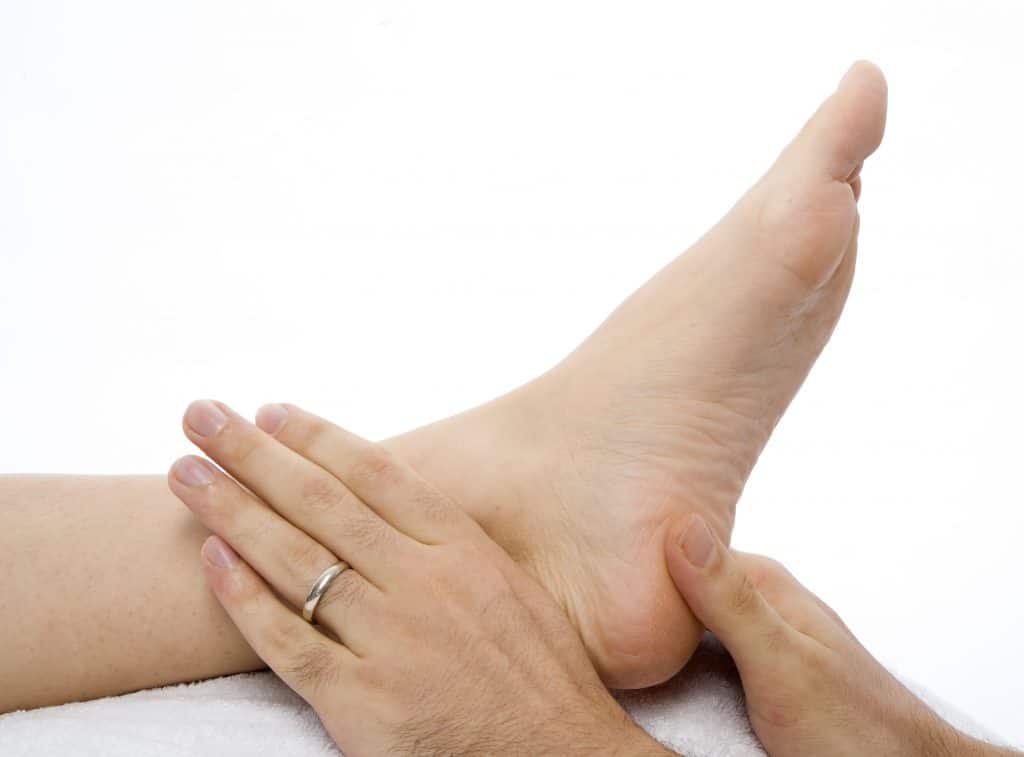
Home Plantar Fasciitis Treatment 101
Plantar fasciitis (pronounced PLAN-tur fas-e-I-tis) is caused by an inflammation in the heel of the foot. It is one of the most commonly diagnosed causes of heel pain in active men and women between the ages of 40 and 70. It’s primary cause is the inflammation of the thick, weblike ligament connecting your toes to your heel bone called the plantar fascia. Home Plantar Fasciitis Treatment can often help if started immediately. If it doesn’t resolve within a week, however, see your Podiatrist for help.
The pain brought on by plantar fasciitis can be debilitating.
Luckily there are several in- home Plantar Fasciitis Treatment remedies that may be able to relieve the pain in your heel.
While there have not been many medical studies into their efficacy, these methods have been used by million suffering from plantar fasciitis. You may find that they work better alone or in combination with one another.
Home Plantar Fasciitis Treatment :
- Get off your feet. Let your feet rest by limiting or, if at all possible, eliminate th
ose daily activities which exacerbate your heel pain. When possible, refrain from walking or running on concrete and other hard surfaces.
- Wear proper footwear. The right arch support and good shock absorption are essential characteristics of appropriate footwear. Select an athletic shoe or a shoe with a lot of cushion in the sole.
- Always wear your shoes. Put them on as soon as you get up. Not wearing shoes or going barefoot can make the pain worse. Avoid slippers as they don’t have the support that is needed.
- Use shoe inserts. Many retailers carry shoe inserts (over-the-counter orthotics) and heel cups designed to help cushion the heel. Even if you only have pain in one foot, you should always use them in both shoes or you run the risk of developing other conditions.
- Ice your heel. Icing the affected heel will relieve the pain by reducing inflammation.
- Take a nonsteroidal anti-inflammatory drug (NSAID). Ibuprofen (such as Motrin or Advil), naproxen (for example Aleve) and other over-the-counter nonsteroidal anti-inflammatory drugs will alleviate the pain. NSAIDs are most commonly taken orally via pills but many also have a cream that can be rubbed over the sore area.
- Stretch you feet and legs. Doing simple exercises like, calf stretches, towel stretches and toe stretches can make your ligament more flexible. It will also build strength in the muscles that support your foot arch. Do them several times a day, most importantly first thing in the morning.
- Exercise with little impact. Exercises like swimming or cycling won’t create or aggravate plantar fasciitis. Stretch your calves and feet once you’re finished. Make circles with your feet and ankles, or curl and relax your toes.
- Stay away from impact-heavy activities. These involve activities like sprinting and jumping, which are hard on your feet and can tighten your calf muscles if you don’t stretch them.
When To Switch From Home Treatment To Professional Care For Plantar Fasciitis?
If you see these signs then there’s a good chance you should be switching from home treatment to professional one for plantar fasciitis:
1. Pain Doesn’t Go After Several Weeks: If you have been taking home treatments like stretching, icing, using supportive footwear and resting for 3-4 weeks and see no improvement in pain, it’s the sign you must get a professional treatment at this point.
2. Pain Keeps Getting Worse: If pain hasn’t subsided even after multiple treatments, instead it starts getting worse over time, it may be an indication that there’s a much deeper problem than plantar fasciitis which will require specialized care.
3. Limited Mobility: Everyone know plantar fasciitis makes walking difficult, but if it gets worse the pain will be unbearable which will make this small activity really difficult, it can even interfere with your daily activities. Furthermore, it can lead to prolonged mobility as well, so if you do a job that requires a lot of walking, it’s better to get plantar fasciitis treated as soon as possible.
4. Pain Spreads To Other Areas: To avoid pain many people change their gait, which unfortunately can lead to strain in the other areas such as hip and back, these can worsen over time if you don’t treat plantar fasciitis and don’t return to your normal gait.
5. Morning Pain Remains Severe: If you wake up every day with that intense pain when taking the first step of the day and it hasn’t improved even a little over time then it means your treatment isn’t working at all.
6. Recurring Episodes: If plantar fasciitis keeps coming back even after you treat it successfully, then there’s a chance home treatments aren’t able to treat it completely or there’s an underlying condition, you will surely need some medical treatment to get rid of the problem.

 ose daily activities which exacerbate your heel pain. When possible, refrain from walking or running on concrete and other hard surfaces.
ose daily activities which exacerbate your heel pain. When possible, refrain from walking or running on concrete and other hard surfaces.